Insights
Integrated Healthcare Planning and Design in Jersey
By Dan Gibson - Director
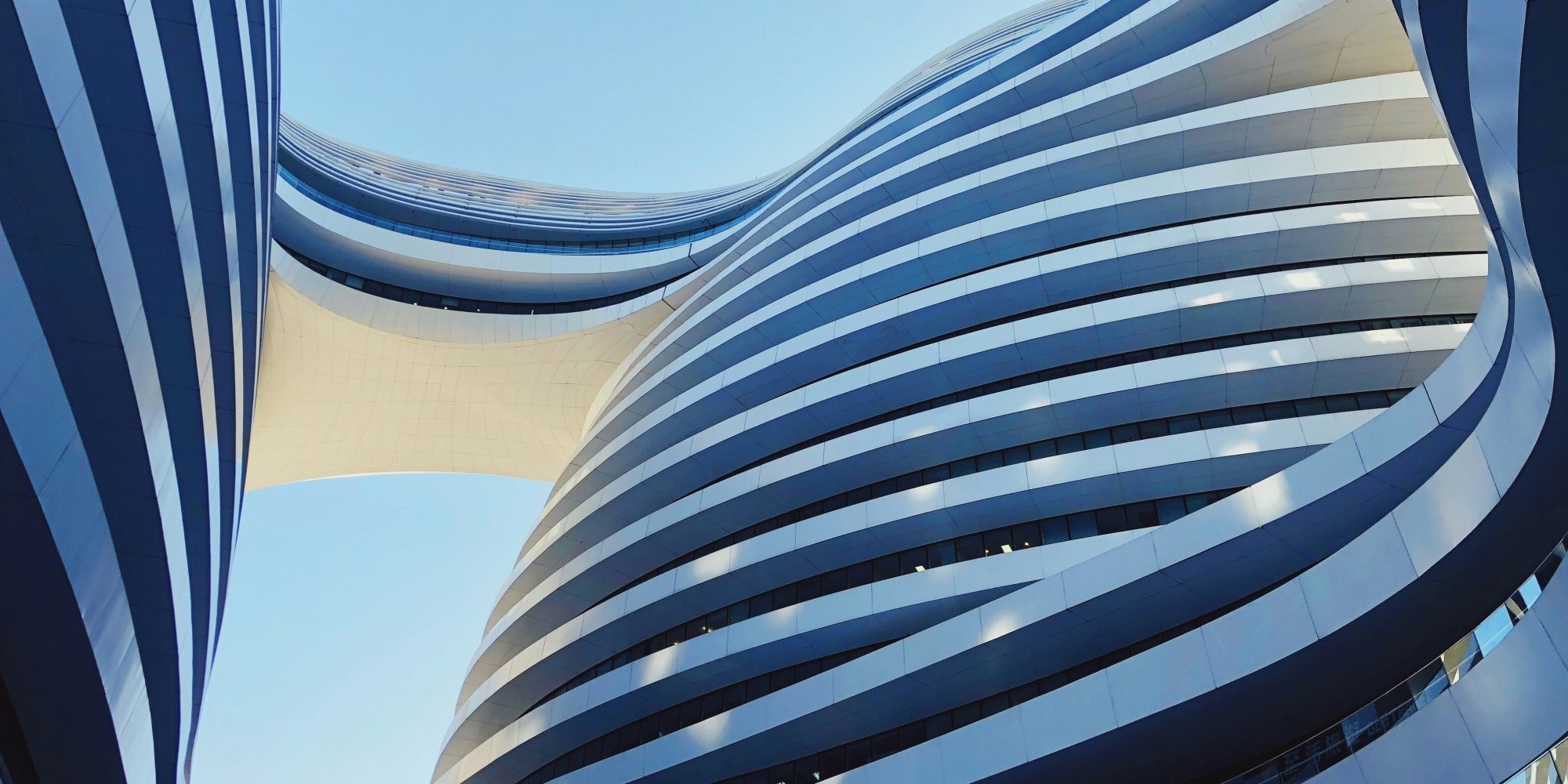
Using an integrated approach to developing major new acute facilities at centre of an island based care system.
Over the last two years, the Health and Community Services Department of the Government of Jersey has been in the process of developing the new Jersey Care Model (JCM). Driven by the urgent need for healthcare system reform, the JCM acts as an exemplar for the future direction of integrated care on the island. One of the most significant elements of the plan is the replacement of the island’s general hospital, and in May 2019 the Chief Minister announced the launch of the ‘Our Hospital’ project. Based on broadly the same timescales as the previously unsuccessful scheme to replace the hospital, the Our Hospital project will transform the provision of healthcare on the island in line with the JCM.
For this unique island setting, ensuring that the replacement facility is in the correct location, is the correct size, and offers the right mix of services delivered in the most appropriate way, is critical for the success of the future healthcare economy. At approximately 60,000m2 and an estimated cost of £466 million, the replacement hospital is the most significant capital development project in the island’s history. As a result, all stakeholders, including the government, patients and their families, clinicians, and the wider local community, hold strong views about the hospital that need to be captured and included in the design and development process.
m2
US$ million
MJ Medical have a long track record and established reputation supporting clinicians and the hospital management team in the development of healthcare projects in Jersey, and we were appointed from the outset of the Our Hospital project to lead the briefing process. That briefing process facilitates the subsequent development of a hospital design, and it includes the development of clinical service operational and capacity models, reflecting the wider systemic planning contained in the JCM, which identify how the hospital intends to deliver care and the capacity it will need to do so.
Uniquely, MJ Medical takes an integrated healthcare planning and architectural design approach to the briefing process. This means that at the earliest stages, from establishing the vision, developing the capacity model, and identifying the preferred model of care with clinical stakeholders, our specialist team of healthcare architects work along-side our healthcare planners to evaluate and advise on the design feasibility of the emerging brief. This approach significantly enhances the quality and responsiveness of the brief to the client’s requirements. It also saves time during the design development process by avoiding the brief review and testing normally undertaken by the architectural team in a traditional linear non-integrated approach.
Working alongside our project partners PwC, our team initially set out to both stress-test the Jersey Care Model and to undertake demand and capacity modelling to inform the development of a functional brief for the Our Hospital project. We worked closely with the acute care clinical management teams to review and develop the acute clinical models, identifying potential improvements, opportunities and limitations in respect of the Jersey island context. The review of the Our Hospital operational model, the potential for refinement, and its integration with the wider JCM, was considered in the context of state-of- the-art reference healthcare provision models from around the world. The influence of an integrated care approach promoted the inclusion of many clinical and support services not included in the current hospital, such as mental health, significantly differentiating the Our Hospital project from previous schemes.
Following the development of the clinical models, our integrated healthcare planning and design team, working along-side the hospital clinical leadership and management leadership team, went on to define the functional brief. The overall aim of the brief was to support the delivery of the clinical models through the optimisation of departmental zoning and patient flows, maximising efficiencies and patient throughput, and improving the quality of care being delivered. The brief provides an initial assessment of the likely accommodation required via a Functional Area Estimate (FAE), identifies how that accommodation should be arranged, and provides a high-level statement for each clinical service on the philosophy of care delivery. The design part of our team constantly assured the ‘designability’ of these briefing outputs, enhancing the quality of the functional brief and ensuring efficiency and quality in the subsequent design process.
Our integrated team went on to developed a bespoke ‘Kit of Parts’ based on an evidenced, benchmarked ‘kit’ derived from similar planned or completed major acute hospital both in the UK and abroad. The benchmarked ‘kit’ was customised to reflect the project vision and functional brief, quickly allowing the creation of a 3D ‘block and stack’ model to facilitate both a site selection process and the integrated brief and design development process.
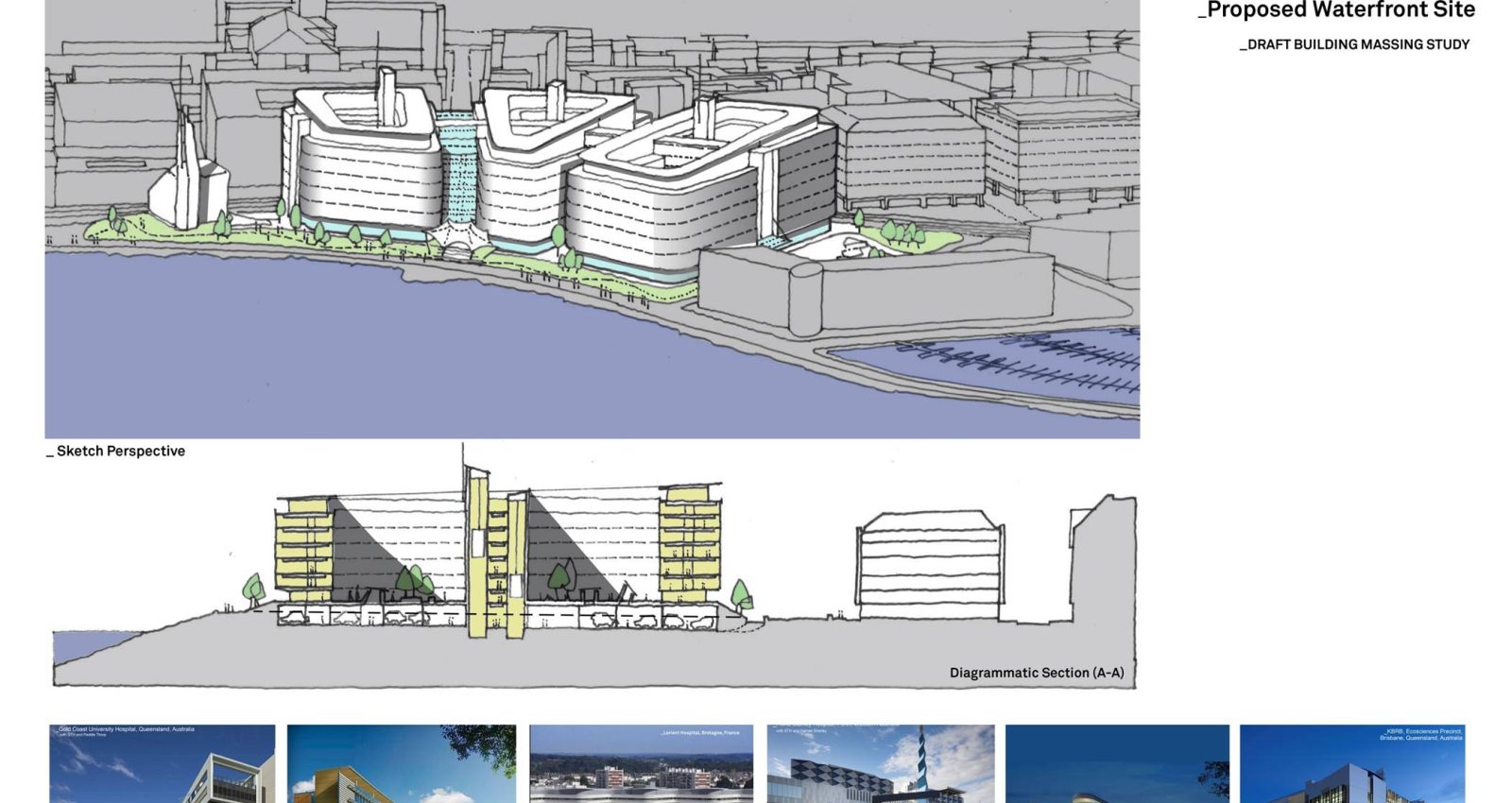
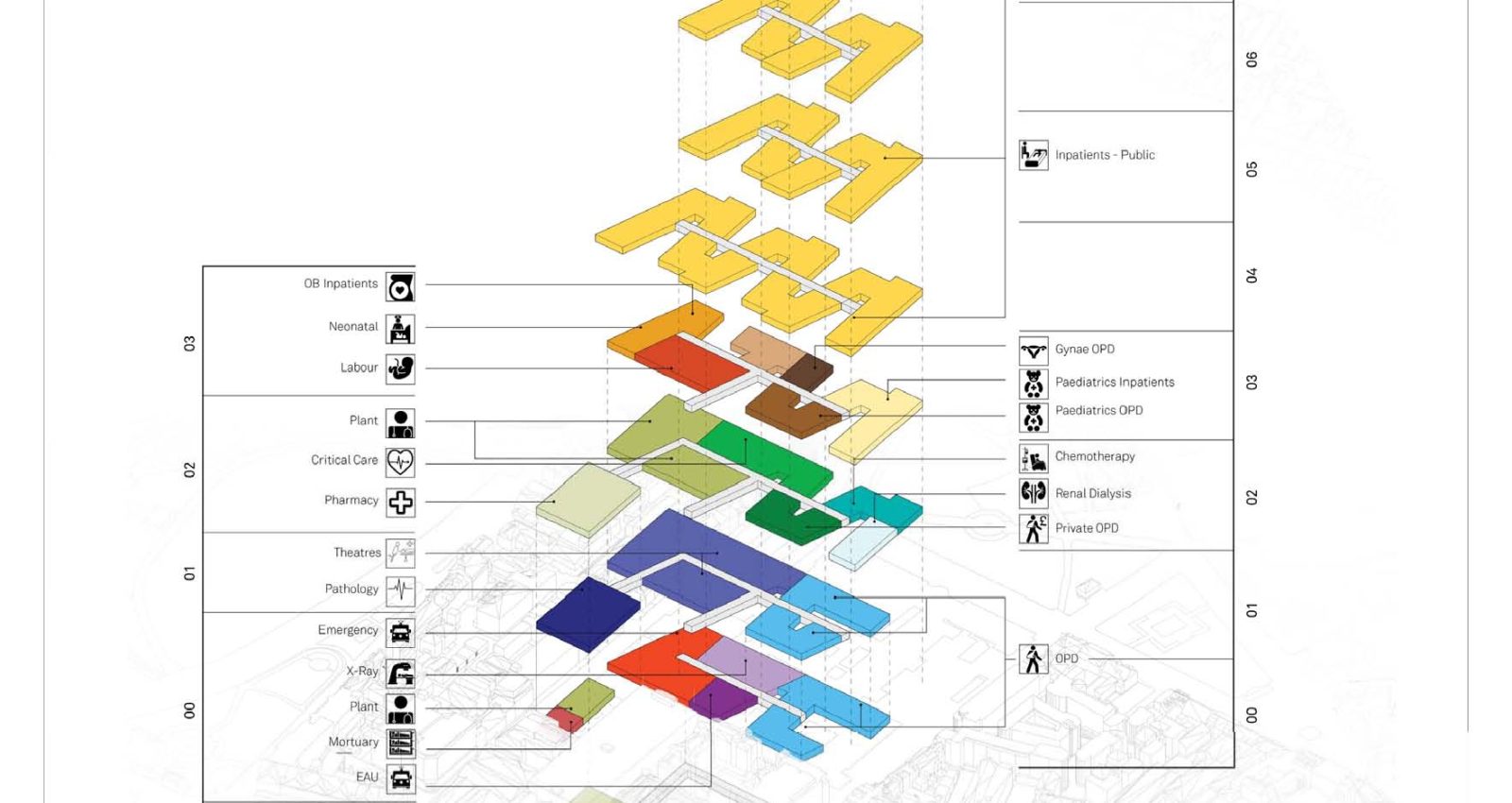
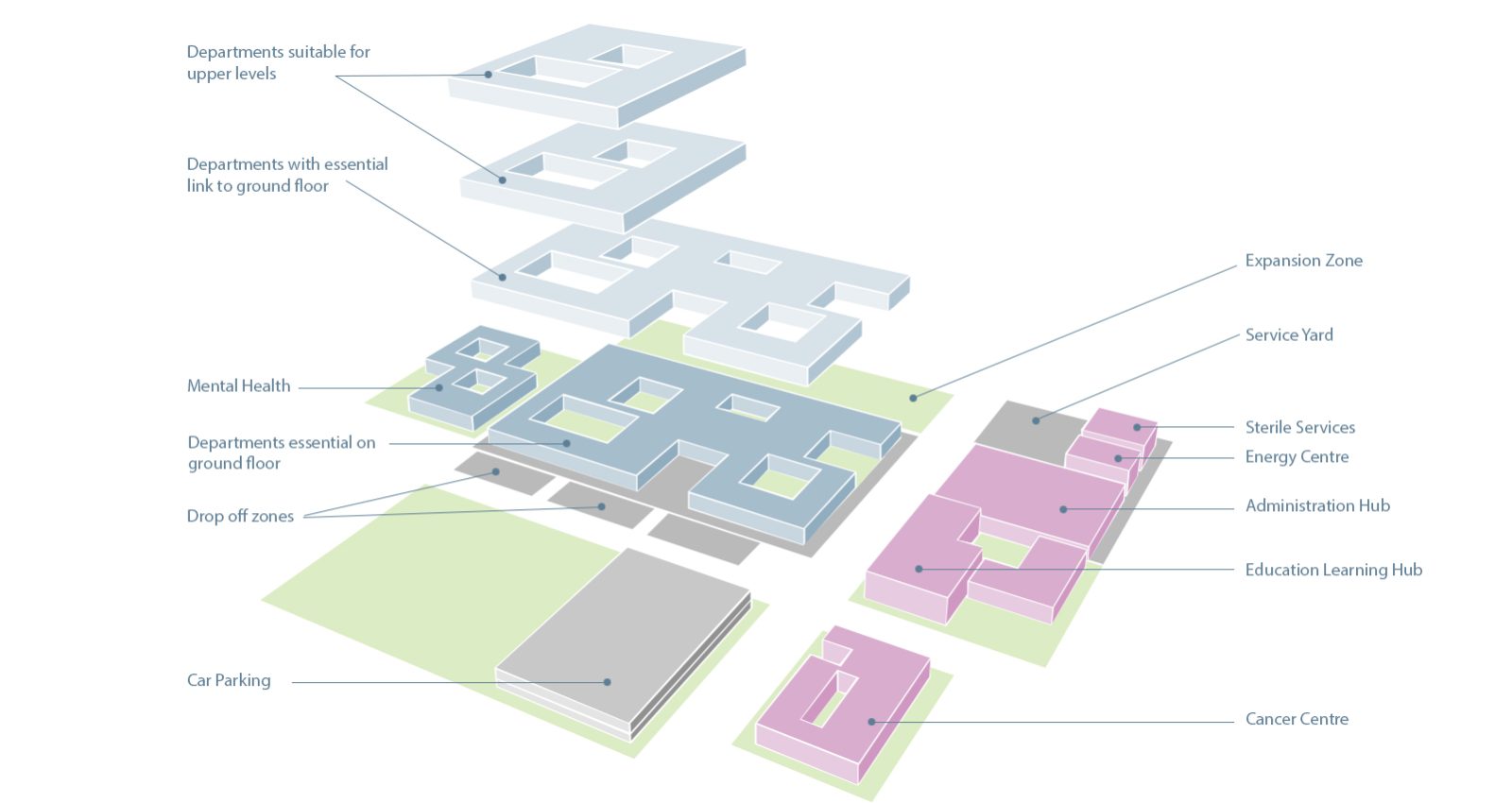
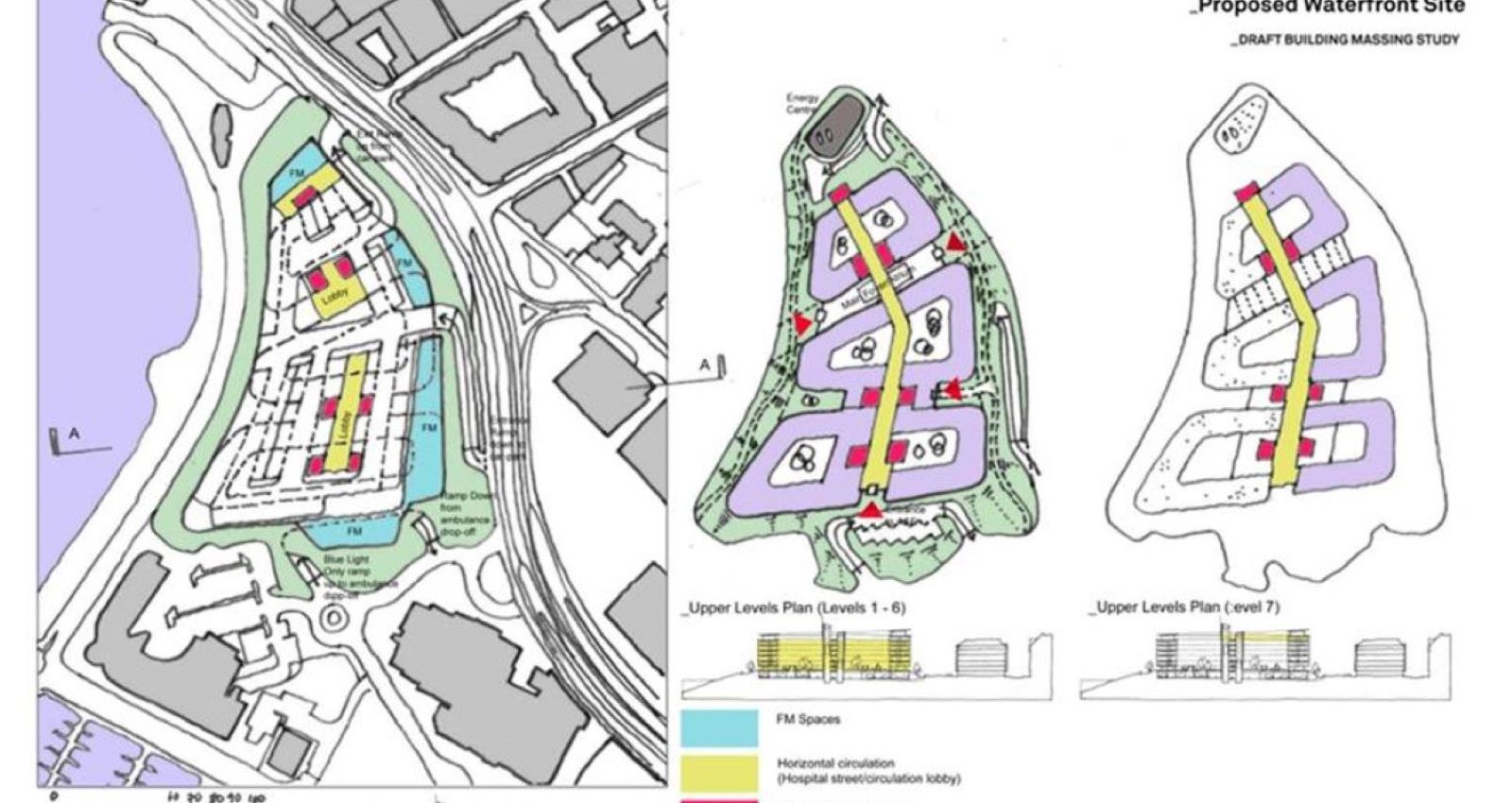
With all stakeholders, including the government, patients and their families, clinicians, and the wider local community, holding strong views about the hospital, the decision on where a new hospital might be located was opened up to public consultation and discussion. A long list of more than 80 potential sites were identified through this process and MJ Medical was tasked with facilitating the site selection short-listing process. Utilising the functional brief based kit of parts, the process of site suitability and testing was simplified. The evidence based kit of parts and the transparent assessment methodology could subsequently stand up to any level of scrutiny. It enabled the site selection to not only be physically tested, but also clinically tested against a new integrated care model and a hospital fit for a 2036 planning horizon. Within the space of 4 weeks, each and every site had been tested against this kit of parts and a short-list of viable sites selected for further detailed analysis.
Following selection of the preferred site by the Government of Jersey and the successful appointment of the development partner, the project rapidly moved forward into the development of the design. Through this phase our integrated team continues to support the delivery partner, advising on and linking the emerging design solution with the aspirations and requirements captured in the brief and ensuring they are realised in the final design.
Our driving ethos is the idea that excellence in planning and design facilitates excellence in the delivery of care – we believe this is achieved through stakeholder engagement, collaboration and evidence-based briefing and design. Our planning of an optimal healthcare facility is based on the notion of ‘walls around activities and technology’; the design should be developed with the primary objective of supporting exemplary delivery of those activities, maximising the use technology to facilitate quality and efficiency. As such, our integrated healthcare planning and design approach helps to realise efficiencies in the briefing and design process, and also drive-in a much more robust and high quality output from the earliest stages in the hospital development process.